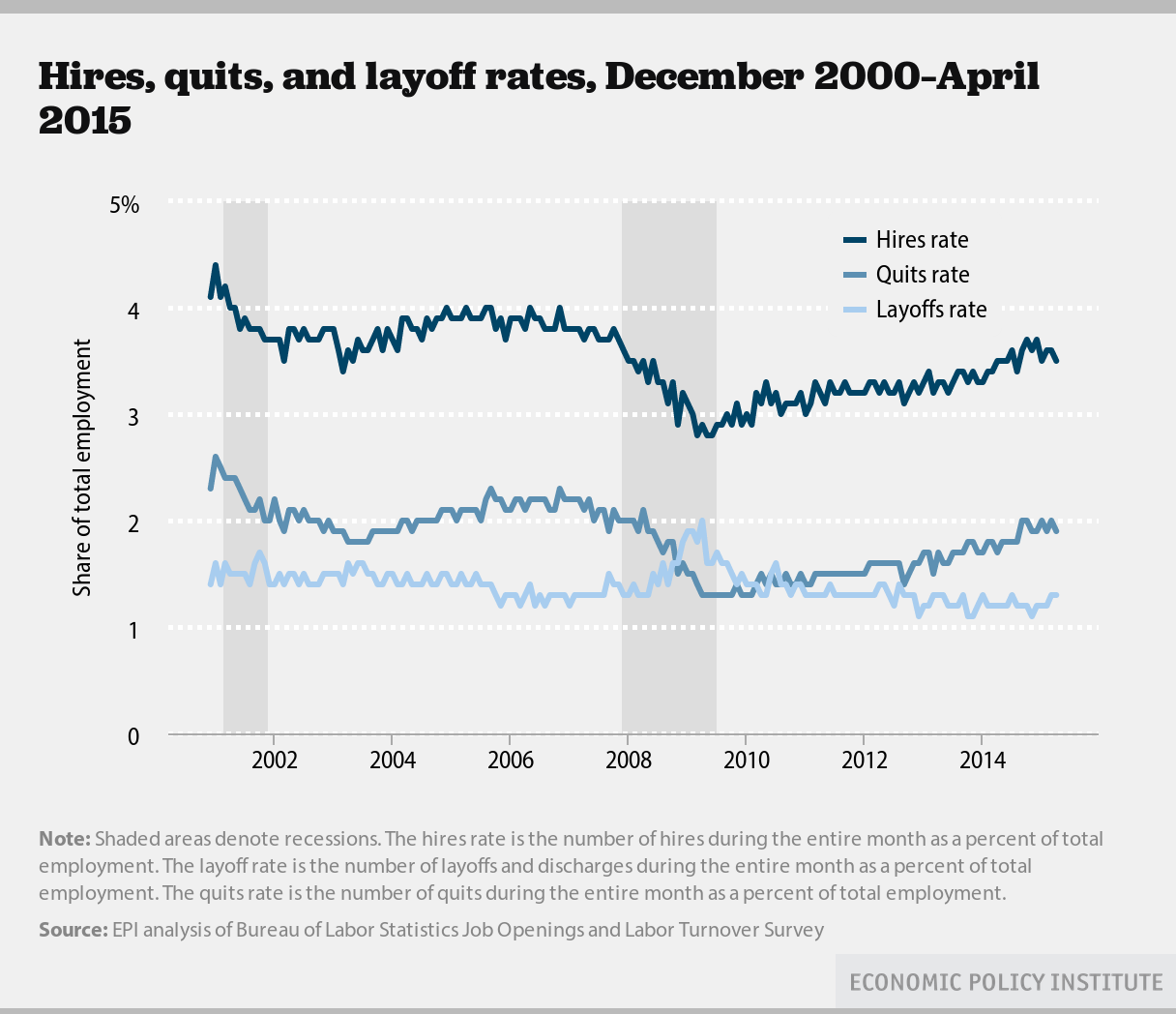The number of unfilled jobs in the United States in the month of April hit the highest level ever measured since the Bureau of Labor Statistics began conducting the Job Openings and Labor Turnover Survey nearly 15 years ago. According to BLS, there were 5.4 million open positions in the country on the last day of the month, up more than 250,000 from the previous months.
The JOLTS data, known to be one of Federal Reserve Board Chair Janet Yellen’s preferred data points for assessing the health of the economy, also determined that the number of people hired in April rose to 5 million from the previous month’s total of 4.9 million, and the number of people voluntarily quitting their jobs was down slightly to 2.7 million.
Related: Why Chipotle Wants to Give Its Workers More than a McJob
The quits rate has been on a general upward path for the past two and a half years, which is, somewhat counterintuitively, a good thing. Economists generally see a rising quits rate as indicative of a jobs market in which employees feel confident about leaving an existing job because they either have a new one already, or have good expectations of finding another.
However, the quits rate movement has been stalled somewhat in the past several months, notes Elise Gould, senior economist with the Economic Policy Institute. Likewise, the hires rate, which tracks workers entering new jobs, has also been stuck since the beginning of the year.
“The voluntary quits rate fell slightly from 2.0 percent in March to 1.9 in April, the same rate it was in four of the last six months,” she wrote Tuesday. “In April, the quits rate was still 9.2 percent lower than it was in 2007, before the recession began. A larger number of people voluntarily quitting their jobs indicates a strong labor market—one in which workers are able to leave jobs that are not right for them and find new ones. Before long, we should look for a return to pre-recession levels of voluntary quits, which would mean that fewer workers are locked into jobs they would leave if they could. But we are not there yet.”
Related: A Greek Default Slashes U.S. Exports and Jobs
And to put things in context, Gould notes that even at the current rate of growth, the economy remains a long way from where is was in the years prior to the Great Recession.
“[E]ven if we continue moving forward at the pace of average employment over the last six months (236,000 jobs per month), the economy won’t resemble the strength of the pre-recession economy (such as it was) until the end of next year,” Gould writes.
Top Reads from The Fiscal Times





